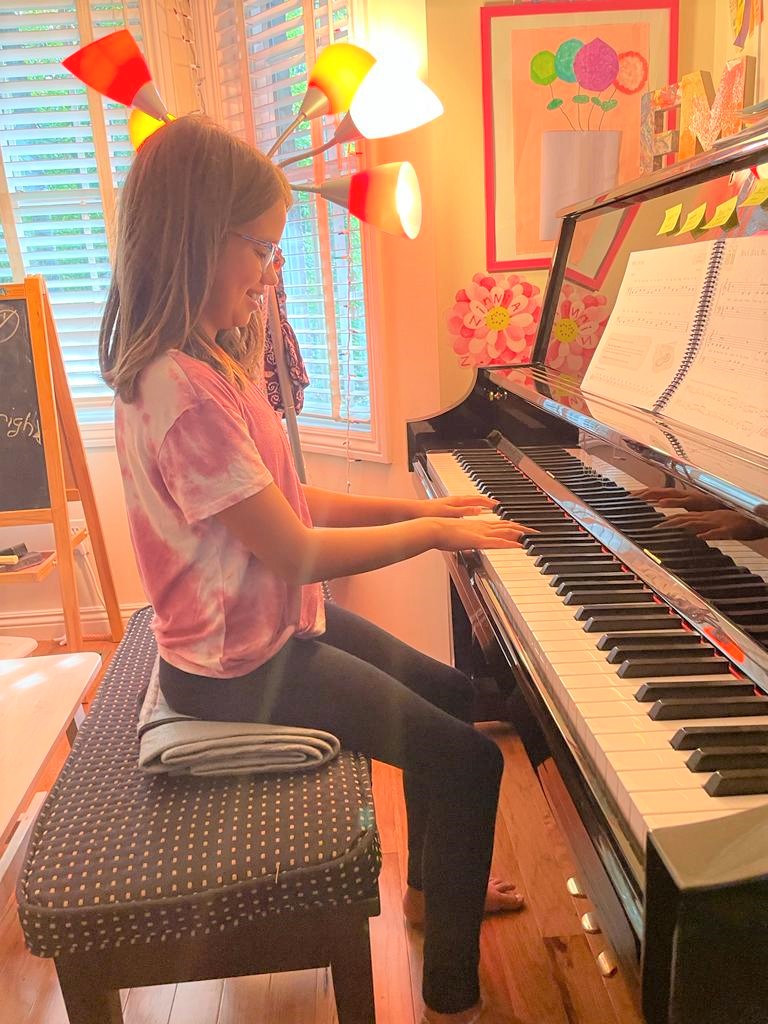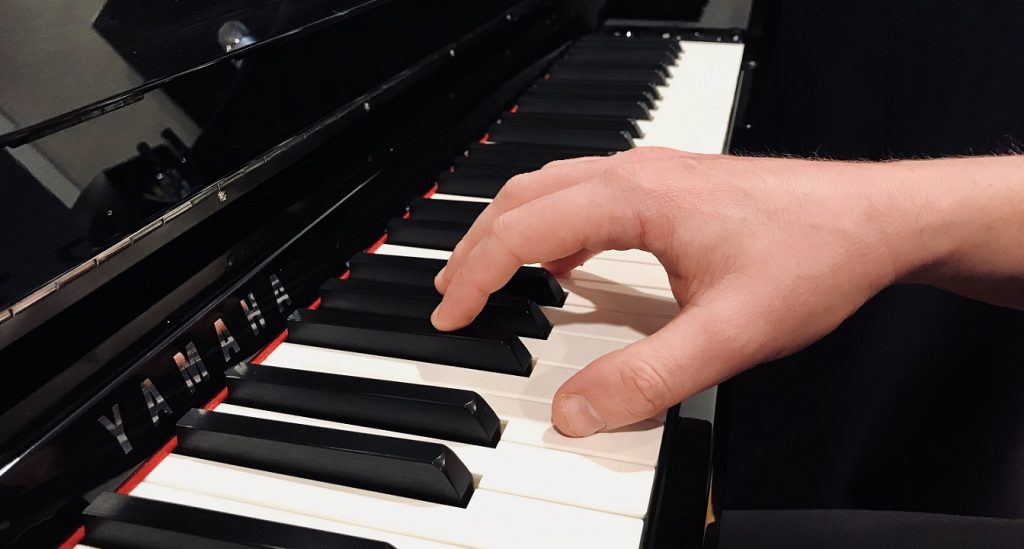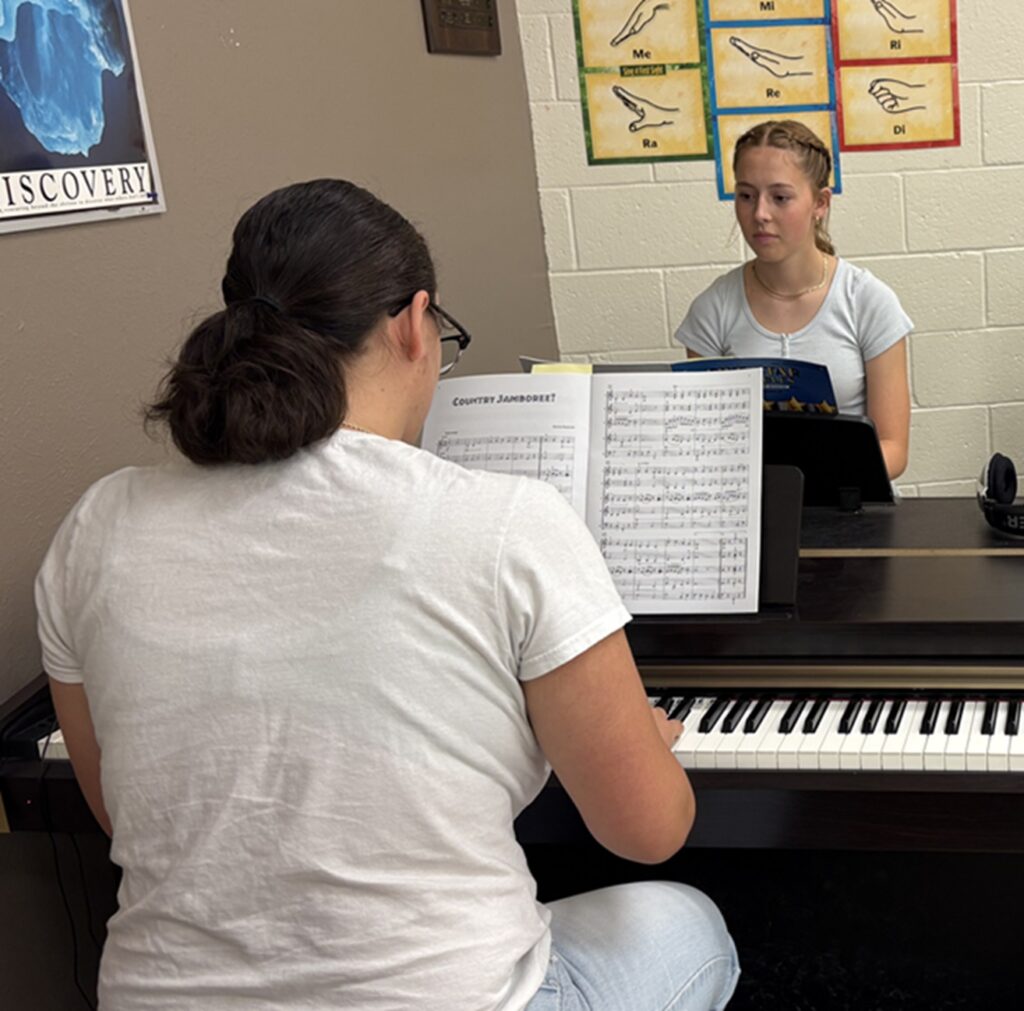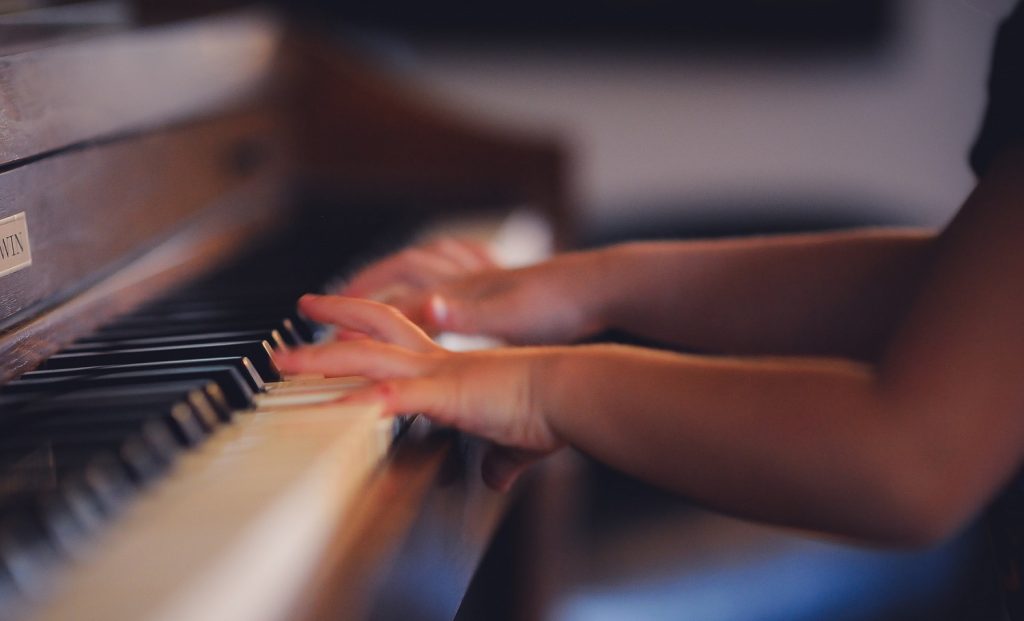Tagged Under:
Fix It: Tips for Teaching Rhythmic Accuracy on the Piano
Try these expert tips to help students understand and master rhythm and pulse.
Rhythm is the bedrock of music. Without it, we would have a random set of pitches aimlessly poking through our sonic world.
A strong understanding of rhythm and the development of an internal pulse are key skills all musicians and music students must possess.
However, too often, students and even their teachers focus their efforts on pitch accuracy with little attention to rhythm. This can lead to playing that lacks character, forward drive and a sense of phrasing. Here are some common errors I have encountered in the piano studio along with proven solutions.
Fix it: Unsteady Sense of Pulse
It is important to recognize the difference between rhythm and pulse. Pulse is what we consider the “beat,” while rhythm consists of the long and short sounds that fit within the pulse. It is common for students to play without a steady pulse. Sometimes this can be due to deficiencies with their playing technique. More often, it is because they have not fully internalized a steady sense of pulse.
HEAD OF THE CLASS: The P-22 Upright Piano
As teachers, sometimes we make the error of immediately reaching for the metronome, hoping that it will solve the problem. However, it is important to note that the metronome is a tool to help us remember the pulse or recall what different speeds are. The metronome is not the panacea for all pulse and rhythmic issues.
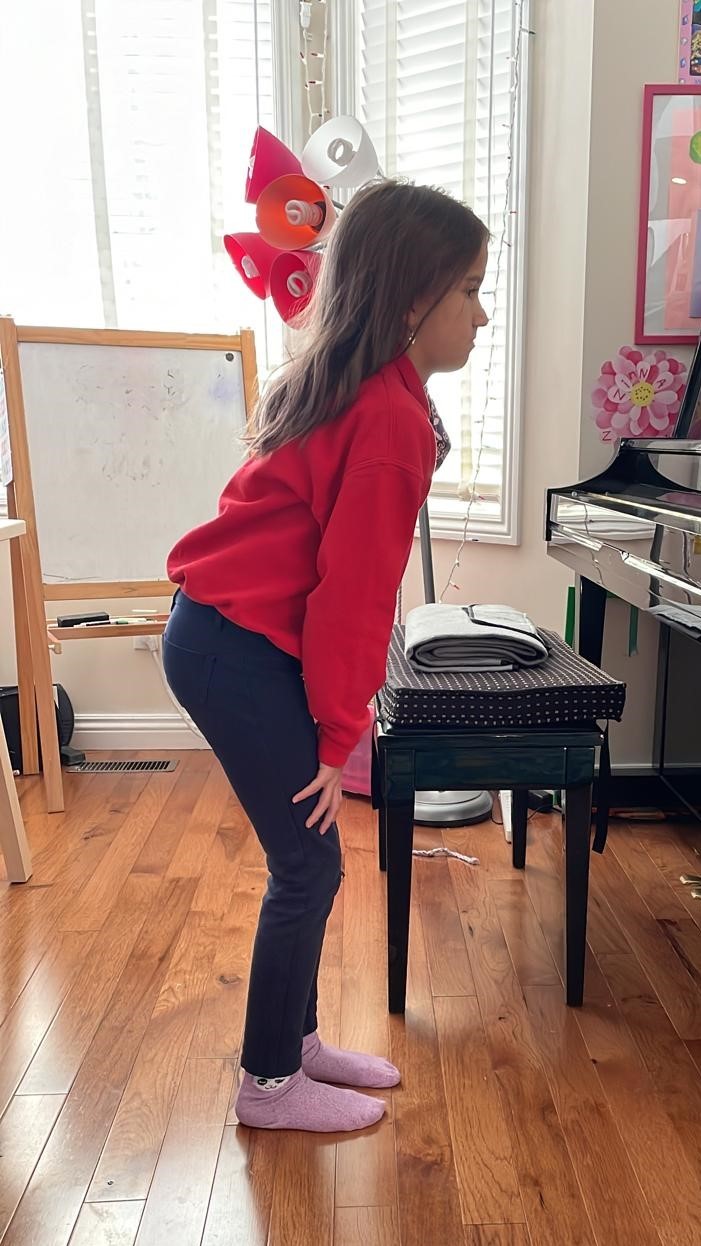 Solution — To address
Solution — To address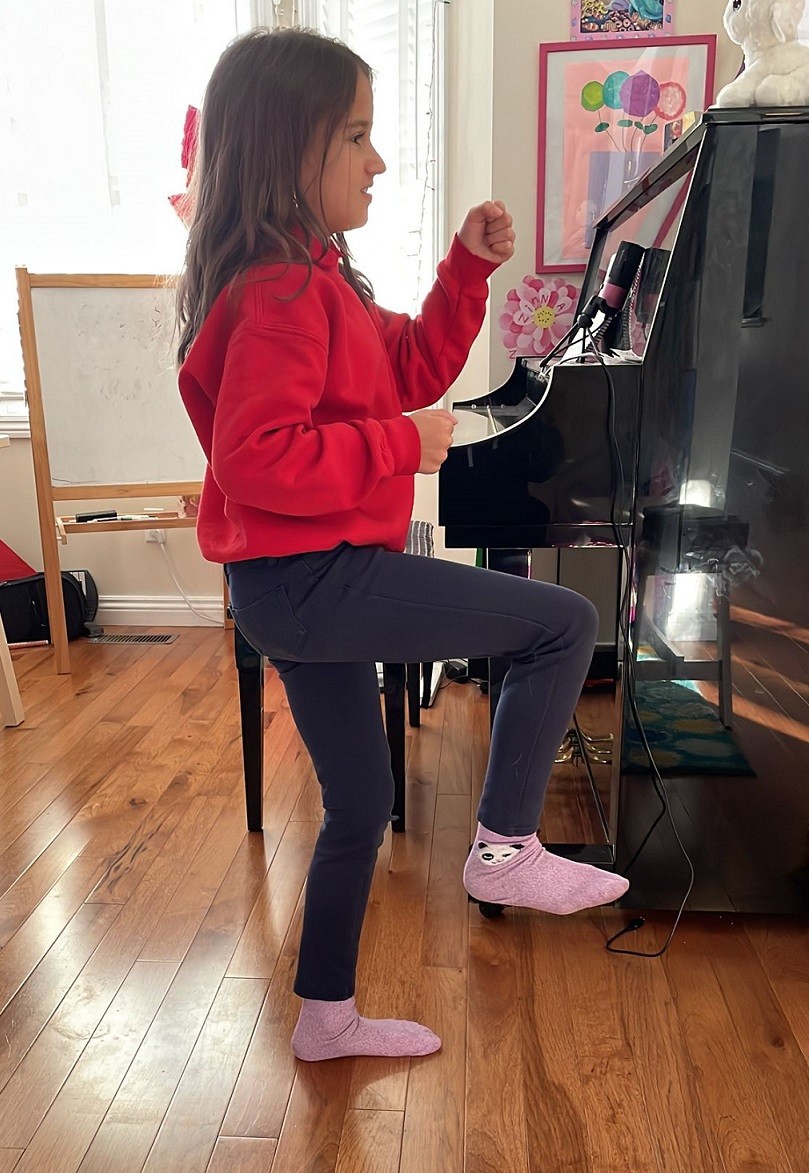 pulse and rhythm problems, I like to use movement activities that can be accomplished away from the piano. I find this approach to be more effective. It also creates a small break in the lesson when the student can stand up and refocus with a different activity. Some movement ideas include marching or patsching (tapping on thighs) while singing the melody of the piece.
pulse and rhythm problems, I like to use movement activities that can be accomplished away from the piano. I find this approach to be more effective. It also creates a small break in the lesson when the student can stand up and refocus with a different activity. Some movement ideas include marching or patsching (tapping on thighs) while singing the melody of the piece.
These movements can also be used in a call-and-answer game of different rhythms as well as more traditional exercises like rhythmic dictation. An understanding of subdivisions can also be addressed with these activities. Inspiration for other movement activities can be found by exploring the teachings of Kodály, Orff and Dalcroze. Once I am convinced students have developed a reliable sense of pulse, I then introduce them to the metronome to help remind them of that pulse.
Fix it: Misinterpreting Rhythmic Notation
Incorrectly reading the rhythm of a passage is another common error made by piano students. Again, because we can sometimes be so focused on pitch accuracy, rhythm is forgotten. In this case, teachers often resort to some type of counting hoping that this will immediately solve the issue. In her book “Professional Piano Teaching, Volume 1,” Jeanine Jacobson outlines four counting systems:
- Descriptive (nominative) — the student uses rhythmically spoken note names (quarter, half note, etc.)
- Numerical — the student counts the number of beats for each note value (i.e., a half note is 1-2, a whole note is 1-2-3-4)
- Metric — the student counts the number of beats per measure successively (i.e., 1 always refers to beat 1, 4 always refers to beat 4)
- Syllabic — the student counts using an arbitrary set of syllables or words (i.e., Kodály system uses ta, ta-ty)
Many piano method books focus on the first three approaches, which are very helpful when decoding rhythms. However, teachers can and should also apply the use of syllabic counting. Even if this approach is not employed in the method book being used, teachers can always supplement this knowledge with their own activities and explanations.
Solution — I personally like to incorporate the principles of Dr. Edwin Gordon’s Music Learning Theory in my teaching. I introduce my students to reading rhythmic notation using his rhythmic syllable system. It is a beat function system and places emphasis on the rhythmic function of micro and macro beats. I feel that this approach helps students feel the rhythm. Not only do they learn to internalize rhythms with conviction, they also easily grasp the concept of subdivision. As a result, the transfer of this knowledge to their own repertoire is seamless. Another similar approach that uses the principle of beat function but with different syllables is the Takadimi system.
The syllabic approach to rhythm allows students to feel and verbalize rhythms before trying to play them on the piano. Furthermore, they will be able to confidently and accurately recognize and replicate the same rhythmic patterns in different contexts. Once students develop this skill, the transition to metric counting will be much easier, and they will more likely be open to counting while playing! I highly recommend looking into the syllabic approach by attending workshops and conference sessions. This YouTube video provides a short introduction.
THE YAMAHA EDUCATOR NEWSLETTER: Join to receive a round-up of our latest articles and programs!
Fix It: Not Feeling the Difference Between Simple and Compound Meters
 The musical flow of 4/4 versus 6/8 meter is very different. Often, students may not read rhythms correctly because they do not have a full understanding of the meter.
The musical flow of 4/4 versus 6/8 meter is very different. Often, students may not read rhythms correctly because they do not have a full understanding of the meter.
Solution — Again, movement activities will work best to help students appreciate the difference of meters. I sometimes like to join hands with students and help them sway back and forth, alternating weight on each foot to help them feel the pulse of each meter. Doing this while singing a passage or saying a rhythm together will help them feel the accurate rhythm as well as the overall phrasing. It will also help them develop a sense of the subdivisions within each big beat. Once students feel confident with this activity, I may pair them together or have older siblings help younger siblings develop that same understanding of meter.
By focusing on rhythm, you will help your students play with greater confidence and accuracy. Their playing will communicate more musicality, artistry, vitality and character. Once a sense of rhythm and pulse is internalized, your students will enjoy learning music independently and they will play with flair.











